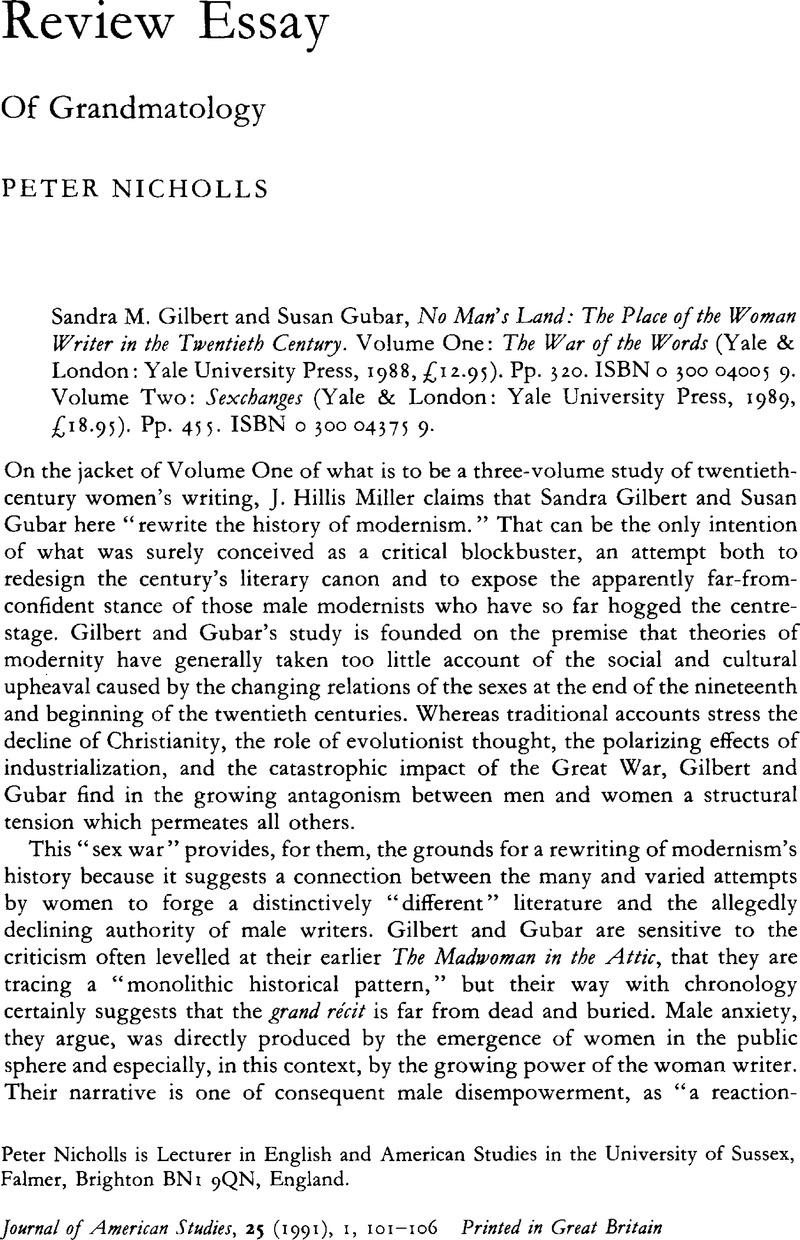No CrossRef data available.
Published online by Cambridge University Press: 16 January 2009

1 Wyndham Lewis on Art: Collected Writings 1913–1956, eds., Michel, Walter and Fox, C. J. (London: Thames and Hudson, 1969), 195–96.Google Scholar
2 For a discussion of the confusion between “feminine” and “female” in Gilbert and Gubar's earlier work, see, for example, Moi, Toril, Sexual/Textual Politics: Feminist Literary Theory (London: Methuen, 1985), 57–69.Google Scholar
3 Eliot, T. S., “London Letter,” Dial, 71 (08 1921), pp. 216–17.Google Scholar See also my “Futurism, Gender and Theories of Postmodernity,” Textual Practice, 3.2 (Summer 1989), 202–21, especially 211–12.Google Scholar
4 Spivak, Gayatri Chakravorty, “Translator's Preface” to Derrida, Jacques, Of Grammatology (London and Baltimore: Johns Hopkins Press, 1976), xlviii.Google Scholar For a serious discussion of Derrida's “grammatology” and gender, see Jardine, Alice A., Gynesis: Configurations of Woman and Modernity (Ithaca and London: Cornell University Press, 1985), 178–207.Google Scholar Jardine observes (p. 188) that “The trace, nonexistent, invisible, and overwhelmingly passive, marks the spot — of future feminine connotations.”
5 See, for example, Derrida, Jacques, Positions (Chicago: University of Chicago Press, 1981), 26Google Scholar: “It is a question… of producing a new concept of writing. This concept can be called gram or différance.”